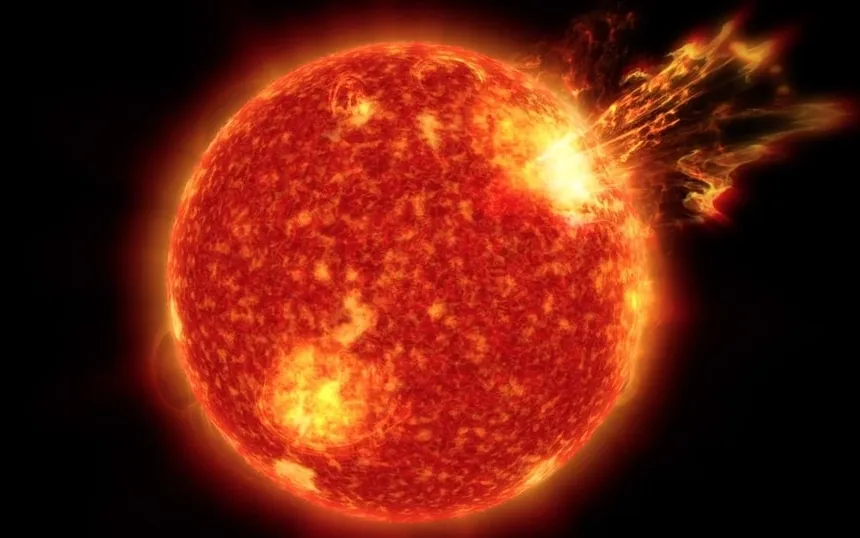NOAA Satellites Spot Solar Storm Heading Towards Earth
Following a short period of tranquility, the Sun has resumed its activity. A significant eruption occurred on June 4, resulting in the release of a substantial coronal mass ejection (CME) into space. Regrettably, it was aimed at Earth. The National Oceanic and Atmospheric Administration (NOAA) identified the occurrence through its satellites and released a solar storm warning on June 7 and 8. It is noteworthy that this is the initial solar storm of June and the first in nearly two weeks. Be aware of what to anticipate.
According to a SpaceWeather.com report, “NOAA forecasters say the CME could hit the Earth’s magnetic field as early as June 7 or June 8. It was thrown into space by the June 4 explosion of magnetic filaments in the sun’s southern hemisphere.” The resulting geomagnetic storm is expected to be between G1 and G2 class intensities.
A solar storm will hit Earth tomorrow
The sun has become a nest of sunspots. There are currently eight sunspots on the side of the sun facing Earth. These sunspots often erupted and caused solar flares. For the past two weeks, these solar flares have been small, but on June 4th, a massive magnetofilament spewed a large number of CMEs into space.
Fears are largely that the current solar cycle is expected to peak early next year. This means that solar activity is likely to increase in the coming months. This could lead to a fearsome G5 geomagnetic storm. For the uninitiated, such storms can disrupt GPS, disrupt cell phone and internet networks, and even cause massive power outages by knocking out power grids. Even electronic devices on Earth are not immune to malfunctions.
Fortunately, the expected solar storm on June 7th and 8th is unlikely to be as strong, but GPS glitches and radio outages are expected.
The role of NASA’s Solar Observatory
The NASA Solar Observatory (SDO) contains a full suite of instruments for observing the Sun, and has been doing so since 2010. It uses three critical instruments to collect data on various solar activities. They include Helioseismic and Magnetic Imaging (HMI), which measures high-resolution longitudinal and vector magnetic fields across the entire visible solar disk, the Extreme Ultraviolet Variation Experiment (EVE), which measures the sun’s extreme ultraviolet radiation, and aerial imaging. (AIA), which provides continuous observations of the entire solar chromosphere and corona in seven extreme ultraviolet (EUV) channels.




